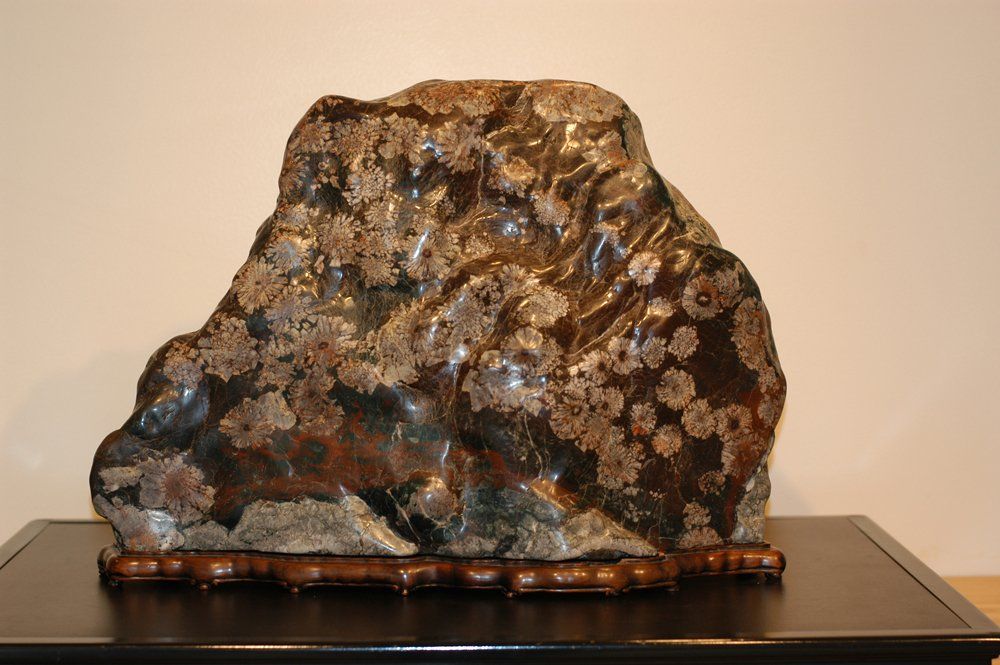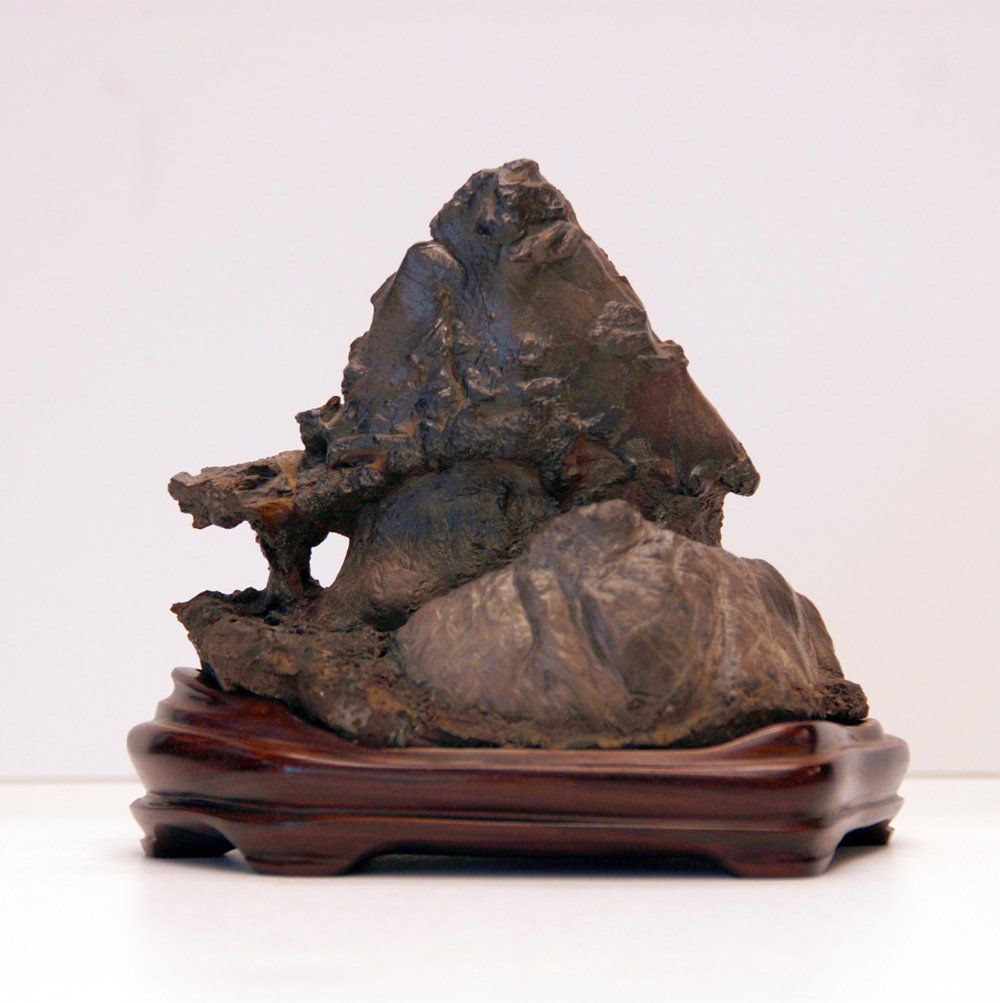The National Viewing Stone Collection in Washington, D.C.
By Thomas S. Elias, August, 2020
Chinese Ying stone from the Richard Rosenblum collection
Thanks to the generosity of Chinese stone connoisseur Mrs. Kemin Hu, the museum received several high-quality Chinese Lingbi, Ying, Taihu, and Qixia stones. Mrs. Hu specializes primarily in traditional Chinese viewing stones and has advised the museum on matters relating to their Chinese stones. The Chinese collection was furthered enhanced when Mr. Ralph Johnson, noted viewing stone collector from Nevada, donated ten large Chinese Lingbi, Taihu, and Ying stones to the National Arboretum in 2005 and 2006. An extraordinary Chinese chrysanthemum flower stone 137 cm (54 inches) high given by Mr. Johnson is displayed in the International Pavilion in the bonsai museum. Much of the other Johnson donation is on loan and temporarily displayed at the National Agricultural Library in Beltsville, Maryland. The Johnson gift of stones was for the planned new Chinese Garden at the Arboretum. It now appears that this facility may not be constructed. If this happens, the stones can return to the Arboretum for display in the bonsai museum. In 2013, Anna Rosenblum donated a small Chinese Ying stone from the collection of her father, Richard Rosenblum.
The national collection contains only a few stones from other countries. There are six stones from Africa, two from Indonesia, and one from Italy. The two Indonesian stones donated by Ismail Saleh, a high ranking judge and leading stone collector in Indonesia, were the first from the Asian Pacific countries. The Italian stone, a magnificent landscape stone from the Ligurian Alps in northwestern Italy, was donated in 2001 by Mrs. Luciana Queirolo, president of the Italian Association of Stone Lovers. Mrs. Oueirolo named this stone “La Bella” (See Featured Stone of the Month).
The National Viewing Stone Collection in Washington, D.C. is an important and valuable collection in North America, not only for the beauty and attractiveness of the stones but also for its historical importance and provenance of these objects. The stones range in size from small handheld ones weighing a few ounces to large rocks weighing over 50 kg (110 pounds). Fortunately, the bonsai museum staff has maintained detailed accession records for all of their viewing stones, bonsai, and penjing.
Millions of visitors to the National Arboretum have viewed the stones since they have been displayed. Over the last two decades, Mrs. Kathleen Emerson Dell of the Arboretum staff stages annual museum-quality exhibitions of viewing stones in the Special Exhibits Wing and adjacent International Pavilion. The Potomac Viewing Stone Group, a private non-government organization devoted to collecting, displaying and appreciating stones, meets monthly at the Arboretum and organizes a major exhibition of viewing stones each year. These efforts have helped to inform and promote viewing stones nationally and internationally.
The successful partnership between the U.S. Department of Agriculture and the National Bonsai Foundation has resulted in the largest and most comprehensive bonsai and penjing museum in the United States. Plans are underway further to expand this complex and the scope of the collections. If this partnership can continue, this vital center for bonsai, penjing, and viewing stones will thrive and continue to serve millions of visitors in person or through virtual Online learning.
For more information, see www.bonsai-nbf.org and www.usna.usda.gov



